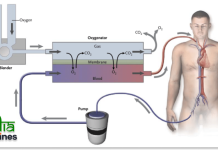
World Neuroendocrine Cancer Day is an important annual event dedicated to raising awareness about neuroendocrine tumors (NETs), a rare and often misunderstood type of cancer. Observed globally on November 10th, this day brings attention to the challenges faced by patients and their families, as well as the ongoing need for better diagnostic tools and treatment options.
What is Neuroendocrine Cancer?
Neuroendocrine cancer arises from neuroendocrine cells, which are found throughout the body and help control many vital functions, such as hormone regulation and metabolism. When these cells become cancerous, they form what are known as neuroendocrine tumors (NETs).
Understanding Neuroendocrine Tumors (NETs)
NETs can develop anywhere in the body, but they most commonly occur in the gastrointestinal tract, lungs, and pancreas. Despite their rarity, NETs can sometimes go undiagnosed for years due to their slow growth and the subtlety of symptoms.
How Common is Neuroendocrine Cancer?
While neuroendocrine cancers are considered rare, the number of diagnosed cases has increased over recent decades, likely due to better diagnostic tools and increased awareness. However, many people are still unaware of the disease, which is why events like World Neuroendocrine Cancer Day are crucial.
History of World Neuroendocrine Cancer Day
The Origin of the Awareness Day
World Neuroendocrine Cancer Day was first established by various patient advocacy groups and medical organizations with the goal of improving awareness and research for NETs. Since its inception, this day has grown into a global initiative that unites patients, medical professionals, and supporters worldwide.
The Role of Global Initiatives
This awareness day plays a significant role in encouraging conversations around neuroendocrine cancer. By focusing on education and the promotion of early detection, World Neuroendocrine Cancer Day has helped save lives and fostered a sense of community among those affected.
Why is Raising Awareness About Neuroendocrine Cancer Important?
Silent and Misunderstood Cancer
Neuroendocrine cancer is often referred to as a “silent” cancer because its symptoms can mimic less serious conditions, leading to frequent misdiagnoses. This can delay treatment and worsen outcomes for patients.
Early Detection and Misdiagnosis Challenges
One of the main challenges with neuroendocrine cancer is that it is frequently detected at later stages. Symptoms like abdominal pain, diarrhea, and fatigue are often mistaken for other illnesses, meaning the cancer may not be diagnosed until it has progressed significantly.
Signs and Symptoms of Neuroendocrine Cancer
How It Varies with Location in the Body
The symptoms of neuroendocrine cancer can vary depending on where the tumor is located. For example, NETs in the pancreas may cause blood sugar problems, while those in the lungs may lead to coughing or difficulty breathing.
Common Symptoms to Watch For
Some general symptoms of neuroendocrine cancer include unexplained weight loss, digestive issues, changes in bowel habits, and skin flushing. However, many of these symptoms can easily be attributed to other health problems, making early diagnosis more difficult.
Causes and Risk Factors of Neuroendocrine Cancer
Genetic Factors
Some cases of neuroendocrine cancer are linked to inherited genetic conditions, such as multiple endocrine neoplasia (MEN), which increases the likelihood of developing these tumors.
Lifestyle and Environmental Influences
Although the exact causes of neuroendocrine cancer are not fully understood, certain lifestyle factors, such as smoking and exposure to certain environmental toxins, may increase the risk of developing the disease.
Types of Neuroendocrine Tumors (NETs)
Gastrointestinal NETs
These are the most common type of NETs and can develop in any part of the digestive system, including the stomach, intestines, and rectum.
Lung NETs
Lung NETs, though less common, can cause respiratory symptoms like wheezing, coughing, and shortness of breath.
Pancreatic NETs
NETs in the pancreas can interfere with insulin production, leading to symptoms like low blood sugar or diabetes.
Diagnosis of Neuroendocrine Cancer
Imaging and Blood Tests
To diagnose neuroendocrine cancer, doctors often rely on imaging techniques such as CT scans, MRIs, and PET scans. Blood tests may also be used to measure specific markers that indicate the presence of NETs.
Biopsy and Other Diagnostic Procedures
A biopsy, where a small sample of the tumor is taken and analyzed, is typically necessary to confirm the diagnosis and determine the type and stage of the cancer.
Treatment Options for Neuroendocrine Cancer
Surgery
For many patients, surgery to remove the tumor is the most effective treatment. Depending on the size and location of the tumor, partial or full removal of the affected organ may be required.
Radiation Therapy
Radiation therapy can be used to target and destroy cancer cells, either as a primary treatment or to relieve symptoms in advanced stages of the disease.
Chemotherapy and Targeted Therapy
Chemotherapy is sometimes used to kill cancer cells, but targeted therapy, which specifically attacks cancerous cells without harming healthy ones, has shown promise in treating certain types of NETs.
Living with Neuroendocrine Cancer
Coping Mechanisms for Patients and Families
Living with neuroendocrine cancer can be emotionally and physically challenging. Support groups, counseling, and open communication with loved ones can help patients and their families navigate the journey.
Managing Long-Term Symptoms
Patients with neuroendocrine cancer often experience long-term symptoms, even after treatment. Managing these symptoms with medications and lifestyle adjustments is a key part of improving quality of life.
Importance of Research and Funding
Breakthroughs in Treatment Options
Research is critical in advancing treatment for neuroendocrine cancer. Recent breakthroughs in personalized medicine and immunotherapy offer hope for better outcomes in the future.
The Role of Donations and Research Institutions
Funding for research is essential to develop new treatments and improve diagnostic tools. Donations from the public and support from research institutions make it possible to continue the fight against neuroendocrine cancer.
Global Efforts for Neuroendocrine Cancer
Collaborations Between Medical Experts
International collaboration among medical experts has significantly improved understanding and treatment of NETs, allowing for better outcomes and faster advancements in care.
The Role of Patient Advocacy Groups
Patient advocacy groups play a vital role in supporting those affected by neuroendocrine cancer. These organizations offer resources, raise awareness, and help fund critical research.
How to Participate in World Neuroendocrine Cancer Day
Spreading Awareness Through Social Media
Social media platforms are a powerful tool for spreading awareness. You can participate by sharing information, personal stories, and facts about neuroendocrine cancer using hashtags like #WorldNETCancerDay.
Organizing Local Events
Many communities host events such as awareness walks, fundraisers, and educational seminars to support neuroendocrine cancer patients and their families.
Inspirational Stories from Survivors
How Early Diagnosis Changed Lives
Early diagnosis can make a significant difference in the treatment and survival of neuroendocrine cancer patients. Many survivors credit early detection for their recovery and a new lease on life.
Overcoming Challenges with NETs
Survivors of neuroendocrine cancer often share inspiring stories of resilience and determination, showing that it is possible to live a fulfilling life despite the challenges posed by the disease.
Conclusion
World Neuroendocrine Cancer Day is a vital opportunity to shine a light on this rare and often overlooked form of cancer. Through awareness, early detection, and continued research, we can improve outcomes for those affected by neuroendocrine cancer and bring hope to patients and their families.




































